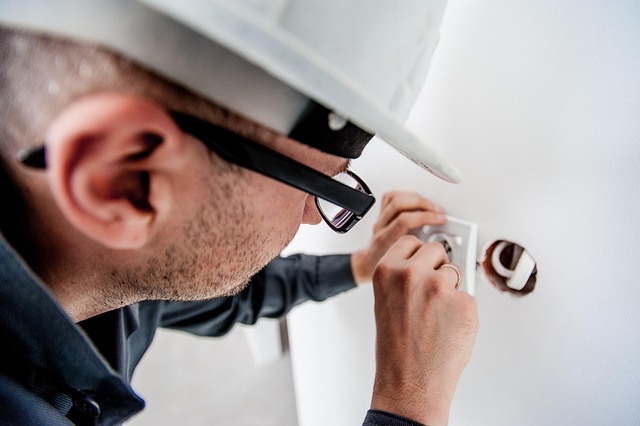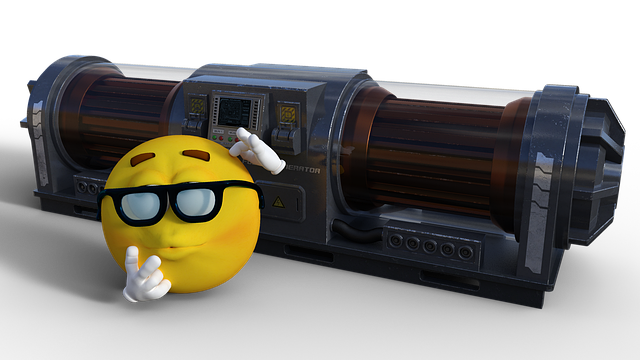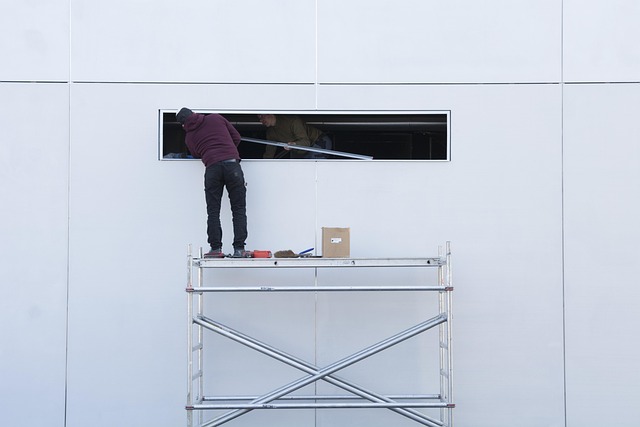Electrical safety requires shared responsibility between electricians and property owners. Homeowners should hire licensed electricians for installations and upgrades, following basic protocols like using insulated tools, keeping clear access to panels, and understanding circuit breakers. Regular inspections and timely replacements by electricians prevent overloading, short circuits, and fires, ensuring safe environments. Common mistakes like outlet overloading and ignoring faulty signs should be avoided, emphasizing the importance of qualified electrician maintenance for system integrity and longevity.
Looking to ensure your home’s electrical system is safe and reliable? This comprehensive guide, tailored by expert electricians, covers everything from understanding basic safety protocols to common mistakes to avoid. Learn about correct installation practices, regular maintenance checks, and more. Empower yourself with knowledge—the first step towards a safer, more efficient space. Elevate your electrical awareness with these essential insights from leading professionals.
- Understanding Basic Electrical Safety Protocols
- Correct Installation Practices for Homeowners
- Common Mistakes to Avoid in Daily Usage
- Regular Maintenance Checks Every Electrician Should Perform
Understanding Basic Electrical Safety Protocols

Understanding Basic Electrical Safety Protocols is a fundamental step in ensuring a secure environment for both residential and commercial spaces. As an electrician, it’s crucial to impart knowledge about safe practices to clients, as even minor oversights can lead to severe accidents or electrical fires. The first layer of defense is always proper installation and maintenance by certified professionals to prevent any inherent risks associated with faulty wiring or outdated systems.
However, beyond professional installation, clients need to be aware of simple safety measures such as turning off power at the main circuit breaker before working on any fixture or appliance, using insulated tools, and keeping clear areas around electrical panels. Regular inspection and timely replacement of worn-out components, along with understanding the basics of circuit breakers and fuses, can significantly reduce the risk of electric shock and short circuits, ensuring a safer living or working space for everyone.
Correct Installation Practices for Homeowners

When it comes to electrical systems, proper installation practices are paramount. Homeowners should always engage the services of a licensed electrician for any new installations or major upgrades. This ensures that the work complies with local building codes and safety standards. An electrician will correctly wire devices, outlets, and fixtures, ensuring optimal performance while mitigating potential hazards like overloading, short circuits, and fires.
During installation, it’s crucial to use high-quality materials and components recommended by the manufacturer. Proper grounding and bonding are essential for preventing electric shocks and redirecting lightning strikes. Additionally, insulation should be adequate to prevent exposure to live wires, and all connections should be secure and sealed to prevent accidental dislodging or damage over time. Regular inspections by a qualified electrician can help maintain these safe practices.
Common Mistakes to Avoid in Daily Usage

Many individuals make simple mistakes when it comes to electrical systems, which can lead to potential hazards and costly repairs. One common error is overloading outlets by plugging in too many devices at once. This can cause excessive heat buildup and potentially start a fire. Always check the amp rating of your outlets and ensure the total load doesn’t exceed the specified limit.
Another mistake to avoid is ignoring faulty electrical components or lighting fixtures. If you notice flickering lights, burning smells, or exposed wires, don’t delay in contacting a qualified electrician. These symptoms often indicate serious issues that require professional attention to prevent accidents and maintain the integrity of your electrical system.
Regular Maintenance Checks Every Electrician Should Perform

Regular maintenance checks are an essential part of any electrician’s routine, ensuring the safety and longevity of electrical systems. These checks should include inspecting insulation for any signs of wear or damage, as well as testing the condition of wires to prevent short circuits and potential fires. It’s also crucial to verify that all components, from outlets to switches, function correctly, eliminating potential hazards in residential or commercial settings.
Additionally, electricians should check for proper grounding systems, ensuring they are intact and functioning as intended. This step is vital for diverting electrical current away from living spaces, thus enhancing safety standards. Regular maintenance also involves cleaning electrical panels and replacing outdated components, such as old fuses or circuit breakers, to maintain optimal system performance.
In light of the above discussions, it’s clear that an electrician plays a vital role in ensuring safe and efficient electrical systems. By understanding basic safety protocols, practicing correct installation techniques, avoiding common mistakes, and conducting regular maintenance checks, both homeowners and professionals can safeguard against electrical hazards while leveraging the benefits of modern technology. Always remember, proper electrical practices not only protect lives but also preserve the integrity of your home and appliances.
